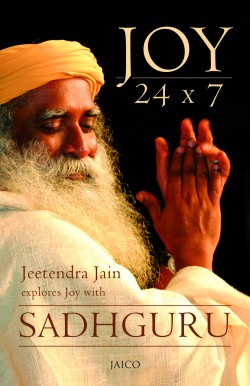
Yoga is often associated with physical exercise that provides the practitioner many health benefits and is readily available to anyone anywhere. If you ask the average person what a yogi is, most people visualize a man sitting in the lotus position meditating, maybe even in a cave, and doing very difficult yoga poses. Adding the word ‘yogi’ changes the practice of yoga in most people’s minds from an hour of practice to someone who has changed their lifestyle entirely and is more devoted to hours of practice.
Yogis have many qualities and often provide inspiration for others. Yet many people cannot see themselves living apart from society, especially if they have already carved out a life that includes a spouse, children, and financial obligations.
So how can this apply to the average person? Sadhguru Explains: “It is my wish that at least an element of being a yogi comes into people’s lives. Otherwise, something very fundamental is going to waste. Bending and twisting your body has its benefits for your physical health, but there is much more to being a yogi. Some sense of being a little more than the physical body is the important thing. Even if you are not like that 24 hours of the day, at least a few moments in a day you should be a yogi.” Sadhguru talks about three broad categories of yogis: Mandha, Madhyama, and Uttama.
Sadhguru: In certain schools of yoga, they classify yogis into three categories. These are referred to as mandha, madhyama, and uttama.
Mandha Yogis – On and Off Perception
Mandha means he has tasted what it means to be conscious. He has tasted the source of creation, he has known the oneness but is not able to keep it throughout the day. He needs to remind himself. When he is aware, he is there. When he is not aware, he loses that whole experience. This is not about being peaceful or being happy. This is being in a stage of nameless ecstasies. So, the first category of yogi has known it, but he has to be reminded or remind himself. Or in other words, his perception is not always the same.
When you are conscious and you perceive, from small things to big things, everything is there. If you are not conscious enough, when your perception goes down, they are not there. When your perception really goes down, let’s say when you fall asleep, you cannot even perceive the world. It has disappeared in your experience. So, similarly, the more subtle a certain aspect becomes, you need a higher or more conscious level of perception. Nobody can be effortfully conscious for twenty-four hours. If you are making an effort to be conscious, if you can manage it for a few seconds or minutes, it’s a big thing. Otherwise, it will go all over the place. So, the first stage of a yogi is called mandha. Mandha does not necessarily mean dull as people normally use the word; it is dullness of perception.
Madhyama Yogis – Neem Karoli Baba
The second category or stage of the yogi is called madhyama, which means medium. For him, the inner dimension and what is beyond is in constantly in perception, but he cannot manage what is here, the physical dimension. There have been various yogis who are worshipped even today, but they were absolutely incapable of anything in their life. At a certain phases of their life, they even had to be reminded to eat and go to the toilet. They were in a fantastic state within themselves, but they became like helpless infants, they became disconnected from the external.
One example is Neem Karoli Baba, who wouldn’t know that he has to go to the toilet. He would simply sit. Somebody would tell him “You have not gone for so many hours, you must go,” then he would go. The bodily functions, the worldly activity was completely absent in their consciousness. They are in a fantastic state, but however fantastic it is, you cannot remain in that state because when you are disconnected with the physical world, you cannot remain in the physical body.
Uttama Yogis – The Story of Guru Dattatreya
The third state of a yogi is constantly in perception of the ultimate, at the same time, he is perfectly in tune with the outside. To such an extent that you do not know whether he is really a yogi or not! One example of this was Dattatreya. People around him said he is the re-incarnation of Shiva, Vishnu and Brahma at once. This is people’s way of expressing it. Because they saw that although he is in the human form, there is nothing human about him. This doesn’t mean he is inhuman, but he is definitely not human. So, when they saw such qualities, they could only compare him to Shiva, Vishnu and Brahma. They said he is the re-incarnation of all the three.
So, sometimes you will see Dattatreya’s images where he is depicted with three heads because he is considered as the re-incarnation of all the three.
Dattatreya lived a very enigmatic life. Even today, after a few hundred generations, the worshippers of Dattatreya are a powerful clan. You might have heard of Kanphats. Even today, they walk around with black dogs. Dattatreya always had dogs around him who were spotlessly black. If you have a dog at home, you know he is a little more perceptive than you. In smell, in hearing, in vision – he seems to be a little better than you. So, Dattatreya took the dog to a different level and he chose those dogs which were completely jet black. Even today, the Kanphats have these big dogs with them. They won’t let their dogs walk, they will carry them on their shoulders and walk because it was Dattatreya’s pet. So, they treat him very special. What he set up is still running and it is one of the largest clans of spiritual seekers.
Parashurama was a great warrior sage from the Mahabharat times. In many ways, without participating in it, Parashurama decided the fate of Kurukshetra war. He fixed Karna in the very beginning. So, he had enormous capabilities, but his emotional volatility did not allow him to perceive the divine every moment of his life. He was off and on, off and on – bad weather most of the time.
So, he went to many, many gurus or teachers. When he found they did not have what he is looking for, he hacked them. Finally, he came towards Dattatreya. People told him “Dattatreya is your answer.” He came, with his axe still in hand. When he was coming towards Dattatreya’s place, many other spiritual seekers had gathered. They looked into his ashram and were running away!
When Parashurama walked in to Dattatreya’s abode, he saw a man who was sitting with a jug of wine on one lap and a young woman on his other lap. He just looked. Dattatreya looked drunk. Parashurama looked at him, put his axe down for the last time and prostrated himself. Everybody else left. The moment he prostrated, the jug of wine and the woman disappeared and Dattatreya was just sitting there with his dog at his feet. Parashurama found his salvation in Dattatreya.
Dattatreya is demonstrating that he can do anything in the world and still not be lost, and this was a demo for Parashurama, because he is a man of immense capabilities, but this capability is finding expression in anger, always finding a negative expression in a state of emotional volatility. So, Dattatreya employed a certain ploy, and when Parashurama could see beyond the wine and the woman and his drunkenness and still know that Dattatreya was constantly in touch with the divine, that moment became his opening. If only he had been that perceptive right through his life, a lot of people would have been spared the axe!




